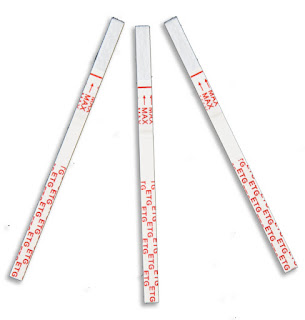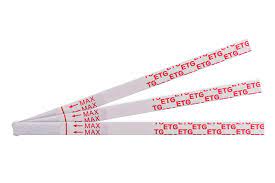What you can expect from an Alcohol ETG Test (ETG Test Strips)?
ETG tests are urine tests that measure levels of Ethyl glucuronide in the body. Alcohol consumption results in the formation of ethanol glucuronide in the body.
Testing strips, kits, or
cups are used for Urine Drug tests. Test
strips for ETG are known to be easy to use and deliver fast and grab some accurate
results.
Compared to urine drug
testing cups, ETG test strips are more sensitive. As a result, drug testing
cups provide a more self-contained process in which the donor leaves the
specimen sealed in the cup and submits the cup/kit to the test administrator.
ETGtest strips are susceptible and effective methods for
verifying sobriety. In fields such as
Public Safety, or the Transportation, and Healthcare, these tests are known to
be used with other some other standardized drug tests.
When
is Ethyl Glucuronide detected?
Even the most minor
alcohol exposure can yield positive results on EtG Tests. Ethyl glucuronide can be easily detected in
your urine for maximum 80 hours after the consumption or even after 3.3 days
after ingestion.
An ETG test differs from
a regular alcohol test (ALC) in that this is one of the main differences. EG test strips are available in packs of 25
or conjunction with an order of drug testing cups.
ETG
Tests: When Are They Used?
As a result of its high
sensitivity to alcohol levels, ETG Test strips are commonly used for sobriety
tests.
Standard drug tests do
not typically include ETG test strips. On the other hand, to be included in a drug
test, ETG (Ethyl glucuronide) is likely to be included in someone on probation
or in a DUI/DWI program.
Some drug tests that utilize ETG testing may need to be verified as a result. Ethanol is present in a variety of household products.
ETG
Test Strips: How you can Use Them?
Use the EtG test strips
as soon as possible after removing them from the sealed pouch or canister. Once
the EtG strips have been removed, the canister should be tightly closed.
Testing should be completed within one hour for the best results.
Observe the product name
at the end of the ETG test strips. Don't touch the membrane of the test strip
to avoid contamination.
For at least 10-15 seconds,
dip the test strip into the course of urine specimen while holding it
completely vertically. The test strip should not be immersed past the entire
line (MAX).
Remove the alcohol strip
from the specimen once the test has finished running and place it on a flat,
non-absorbent surface watch for colored bands to appear as the timer runs.
After five minutes, you should read the results wait no longer than ten minutes
before interpreting the results.
·
Positive
In the control region *,
a single colored band is visible. A colored band does not generally appear in
the series of the test region (T).
·
Negative
The membrane is colored
in two bands. The control region * has one brand, and the test region (T) has another.
·
Invalid
The control band is not
visible. You must discard any test results that do not produce a control band
within the specified read time. The procedure should be reviewed and repeated.
The kit should be discontinued immediately if problems persist. Consult your
local distributor.
Is
it necessary to drink a lot of alcohol to test positive for EtG?
EtG is produced even when
a relatively small amount of alcohol is consumed. EtG can be detected for
almost 80 hours after consumption, even as soon as almost 2 hours. Several
factors influence the overall window of detection.
Some studies show that
the ETG test strips is detectable
from around 24 to 120 hours after alcohol has been all processed, while others
state between the timeline of the 24 and 72 hours, depending on how much of the
alcohol you consumed. Alcohol can be successfully detected in urine between the
timeline of 12 and 48 hours after drinking.
Even around 80 hours
after drinking, some of the advanced urine tests can detect the presence of the
alcohol. Up to 90 days can pass after your hair ingests an alcoholic beverage.
This, however, does not indicate whether a person is drunk.
At around 9 hours, the
level peaks at about 15,000ng/mL. EtG/EtS are usually found to be stable in urine
for more than three to four days at the room temperature. They indicate that presence
of the ethanol was ingested.
The EtG and EtS tests can
produce unexpectedly positive results if incidental exposures such as using
electronic cigarettes, using hand sanitizer heavily, or consuming certain foods
or beverages are present.
The EtG test can detect
84% of heavy drinkers in a day and 79% after five days. According to a second
study, EtG tests within 12 hours are always positive at the 100 ng/ml and 200
ng/ml cutoffs. Drinking light alcohol diminishes effectiveness after 24 hours,
and heavy drinking reduces efficacy after 48 hours.




Comments
Post a Comment